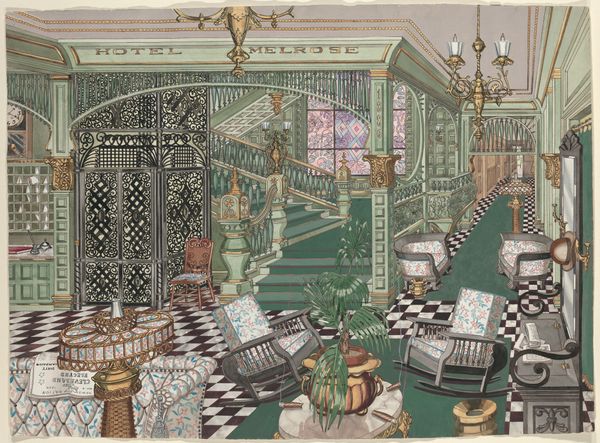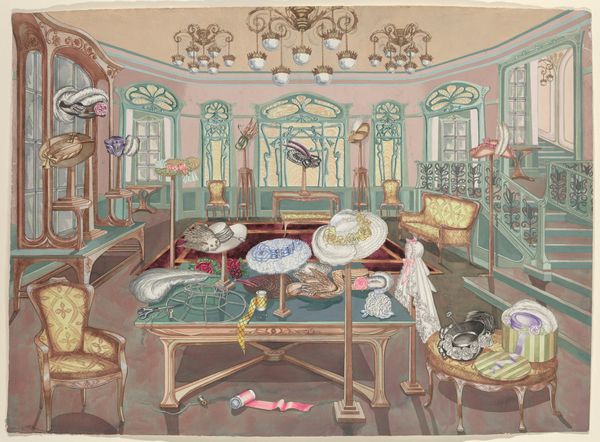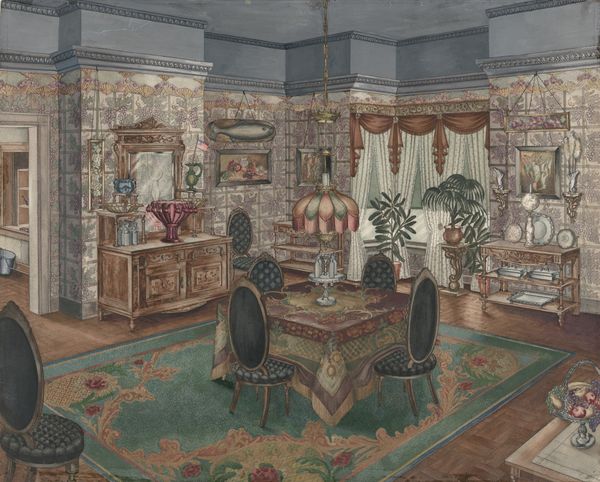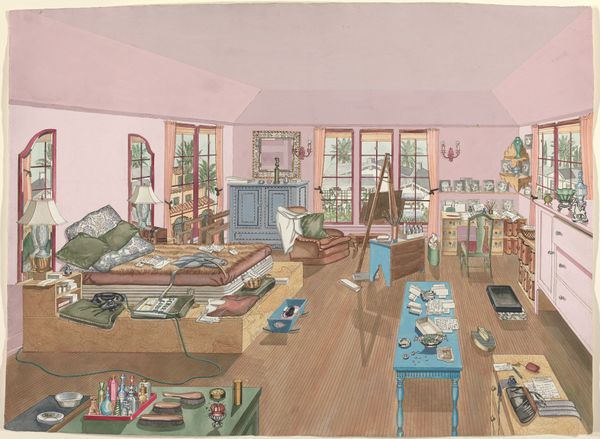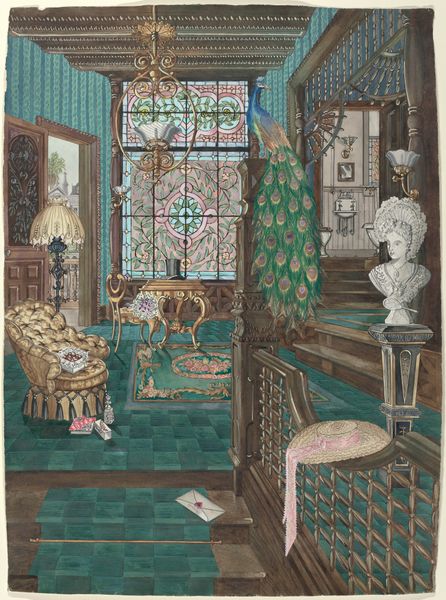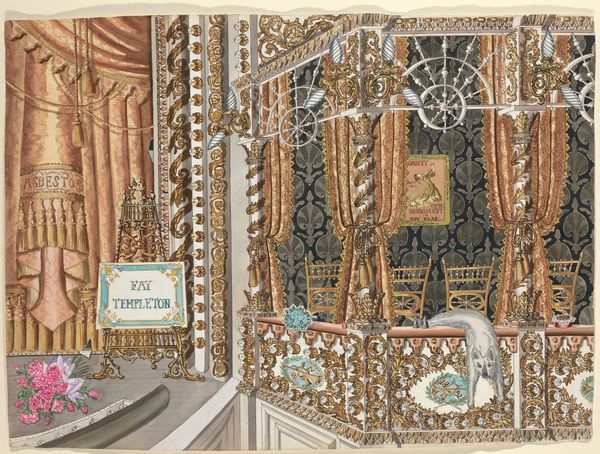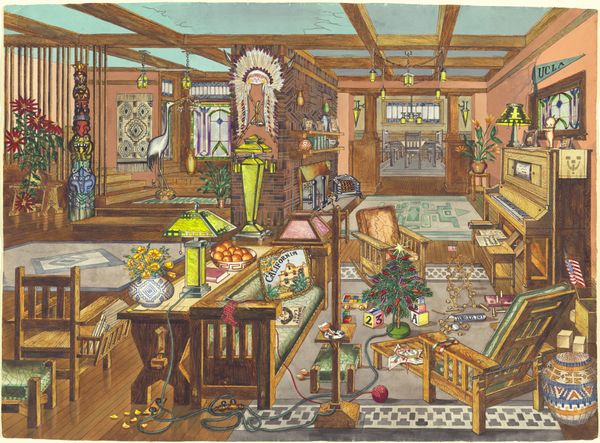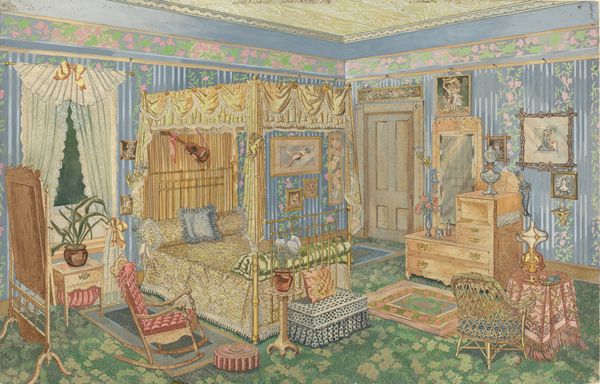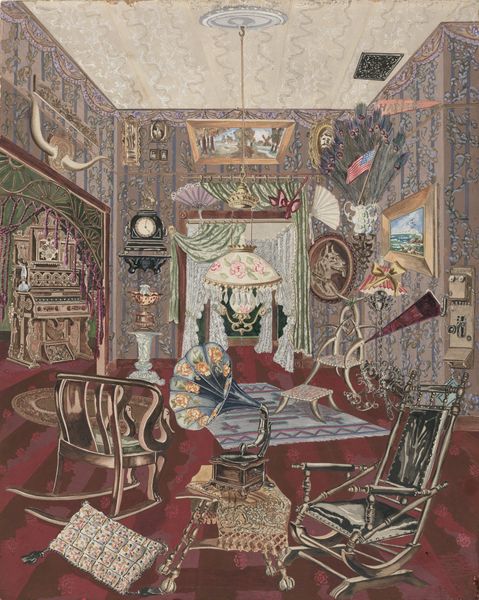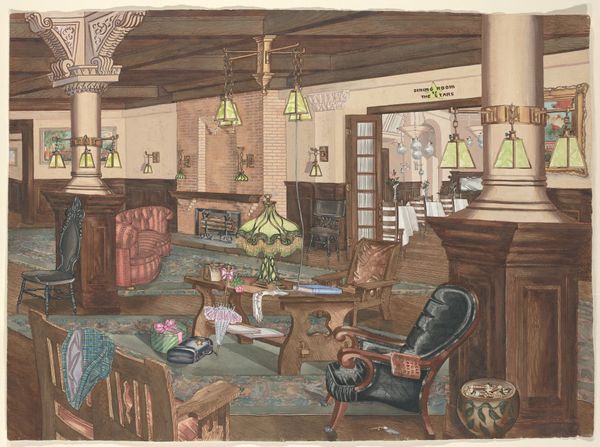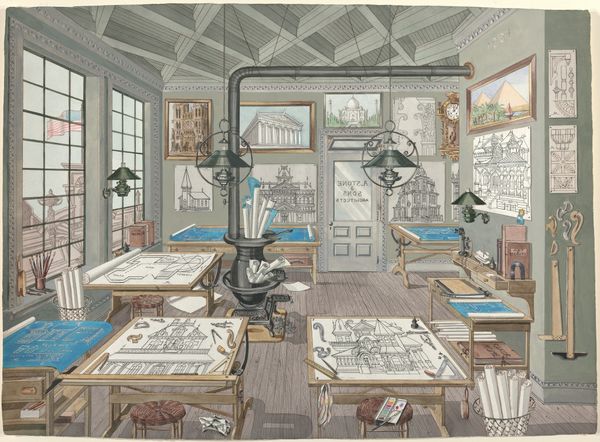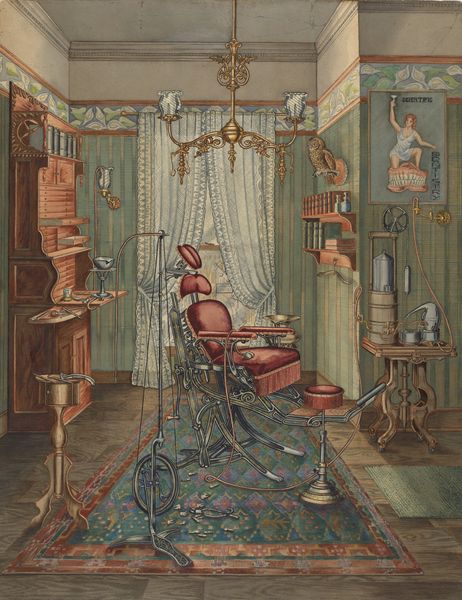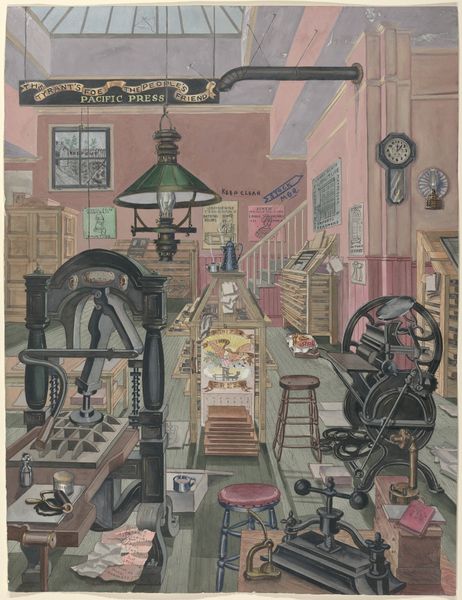
drawing, painting, watercolor
#
drawing
#
painting
#
watercolor
#
folk-art
#
genre-painting
#
watercolor
#
realism
Dimensions: overall: 51.1 x 67.4 cm (20 1/8 x 26 9/16 in.)
Copyright: National Gallery of Art: CC0 1.0
Editor: Here we have Perkins Harnly's watercolor and gouache painting, "Rural Sitting Room, 1900," created between 1935 and 1942. It's remarkably detailed! All the ornate furniture and fussy details create a really overwhelming, almost claustrophobic feeling for me. What do you see in this piece? Curator: It’s interesting you mention feeling overwhelmed. I immediately think about how Harnly is engaging with ideas around social class and representation. Consider the title: "Rural Sitting Room, 1900," made during the Depression. The painting becomes less about documentation and more about presenting a fantasy, perhaps reflecting anxieties around upward mobility and anxieties around social class. Editor: A fantasy? It feels so…real, almost meticulously rendered. How can that be a fantasy? Curator: Think about who had access to such elaborate furnishings during that period, especially in rural settings. Also, remember Harnly created this during the 1930s. Is he reflecting on an actual past, or is he constructing an idealized vision of stability and comfort during a time of great economic hardship? Editor: So the act of depicting this room becomes a political statement in itself? Curator: Precisely! By idealizing a past domestic space, Harnly implicitly comments on the economic and social realities of his present. How do you think this painting might have been received by viewers in the 1930s and 40s? Did they yearn for it or did they think of it as kitsch? Editor: That puts the work in a completely different light! It’s not just a pretty room; it's a commentary on societal anxieties. Curator: Indeed. Harnly transforms the "Rural Sitting Room" into a mirror reflecting society’s hopes, dreams, and insecurities during a turbulent time. Editor: I hadn't considered that. Thanks to that viewpoint I'll look at genre painting in museums very differently.
Comments
No comments
Be the first to comment and join the conversation on the ultimate creative platform.
